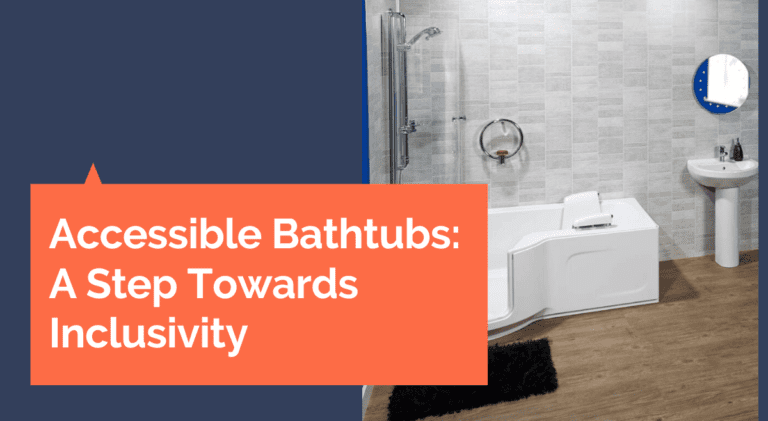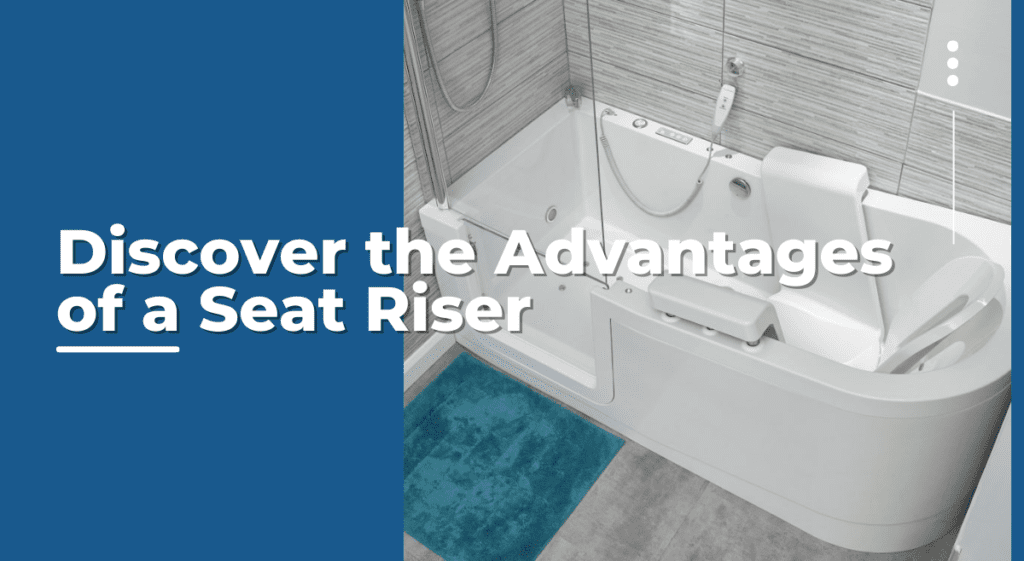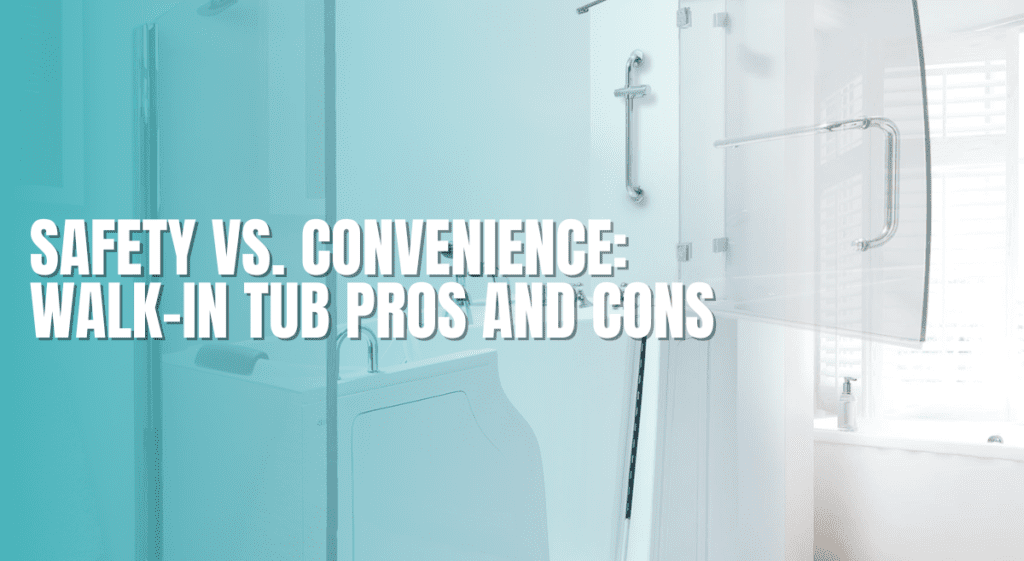Blog
- All Post
- ! Без рубрики
- Artificial intelligence
- best digital marketing agency in dubai
- Blog
- blog
- Digital Marketing
- FinTech
- Mail Order Brides
- Marketing
- Online dating
- Pet
- Social Media
- Sugar Dating
- Ucategorized

Ice baths, a form of cold therapy, have long been a well-kept secret in the athletic community. Athletes of all...

In our modern world, accessibility and inclusivity are key in design. Bathrooms are vital for daily life, but they can...

As we age, our bodies naturally change, and bathing with bath aids for seniors can become more challenging. This is...

If you are considering converting your tub, whether it’s for accessibility reasons or simply to update the look of your...
Have you ever found yourself squirming uncomfortably in your chair during long hours of work or play? Imagine a simple solution that could change the way you experience sitting—introducing the seat riser. Intriguingly, a small addition like a seat riser can make a significant difference. Picture this: I once turned a daunting writing task into a breeze, all thanks to the comfort and support provided by a seat riser. It’s not just a piece of furniture; it’s a game-changer for your well-being. Curious to unlock the secrets of a more comfortable and ergonomic sitting experience? You’re in for a treat, as discovering the advantages of a seat riser is not only enlightening but can potentially transform your daily life. What is a Seat Riser? A seat riser is a device that raises the height of a toilet seat. It is a popular mobility aid for people with difficulty sitting down and standing up from the toilet. Seat risers are available in a variety of heights and styles to meet the individual needs of each user. What are the Different Types of Seat Risers? There are two types of seat risers: portable and fixed. Portable risers are easy to attach and remove, while fixed risers are permanently installed. Portable risers are often made of lightweight materials and used by people who need to use a seat riser on multiple toilets. Fixed risers are often made of more durable materials and used by people who use a seat riser on a regular basis. The advantages of a seat riser lie in its ability to provide increased comfort and accessibility for individuals with specific mobility needs. Who can benefit from using a seat riser? Seat risers can be beneficial for a wide range of people, including: People with mobility issues: Making it easier for people with mobility issues, such as arthritis, hip pain, or knee pain, to sit down and stand up from the toilet. Seniors: Seat risers can help seniors to maintain their independence and use the toilet safely and comfortably without assistance. Postoperative patients: Seat risers can be helpful for people who are recovering from surgery, such as hip replacement surgery or knee replacement surgery. Pregnant women: Seat risers can help pregnant women to use the toilet more comfortably and safely. Children: Seat risers can help children to reach the toilet seat more easily, which can help to promote potty training. Advantages of a Seat Riser Improve Safety and Stability A raised toilet seat makes it easier to sit down and stand up, which can help to reduce the risk of falls. Improves Pain Relief in the Hips, Knees, and Lower Back A raised toilet seat can help to take the strain off of the hips, knees, and lower back. This can be especially beneficial for people who have difficulty squatting or bending down. Increased Independence Raised toilet seats can make it easier for people to use the toilet without assistance, which can help them to maintain their independence and quality of life. Seat Risers for Improved Hygiene Seat risers can also help to improve hygiene. Making it easier to clean oneself after using the toilet. Especially for people with mobility issues or who have difficulty reaching their feet. Help Children and People with Disabilities Seat risers can help children reach the toilet seat more easily and people with disabilities use the toilet safely and independently. Other Benefits of Using Seat Risers In addition, seat risers can also offer a number of other benefits, including: Increased comfort: Comfortable to use especially for people with long legs or who are overweight. Improved posture: Promotes better posture while using the toilet. Reduced constipation: Help to reduce constipation by making it easier to squat, which is the optimal position for bowel movements. Why Use a Professional Toilet Seat Raiser Installer? Professional toilet seat raiser installers have the experience and expertise to install them safely and correctly, especially for people with mobility issues. They can also help you choose the right one for your needs and offer warranties on their work. Conclusion Seat risers are a versatile and affordable mobility aid that can offer a number of benefits to users. If you are considering using a seat riser, be sure to choose one that is the right height and style for your individual needs. The advantages of a seat riser extend beyond height adjustments, providing increased comfort and ease of use for individuals with specific mobility requirements. How to choose a seat riser Few things to keep in mind when choosing a seat riser: Height: Choose a seat riser that will raise the toilet seat to a height that is comfortable for you to sit down and stand up from. A good rule of thumb is to choose a seat riser that will raise the toilet seat to 2-4 inches above your normal height. Style: Choose a style that meets your individual needs and preferences. Either portable and fixed, padded and unpadded, and with and without armrests. Weight capacity: Make sure to choose a seat riser that has a weight capacity that is greater than your weight. Compatibility: If you have a toilet with a bidet or other special features, make sure to choose a seat riser that is compatible with those features. Ready to elevate your sitting experience? Consider investing in a seat riser today and discover the positive impact it can have on your daily life. Share your thoughts in the comments below—have you ever used a seat riser, and did it make a difference for you? For more insights on optimizing your workspace and lifestyle, check out toilet conversion ideas.
Safety vs. Convenience: Walk-In Tub Pros and Cons Imagine transforming your daily bath routine into a safer and more convenient experience. Did you know that walk-in tubs offer a perfect balance between safety features and modern conveniences? Discover how these innovations can revolutionize your bathroom experience. The best part? Achieving the perfect blend of safety and convenience doesn’t have to be complicated. Stay with us, and we’ll guide you through the walk-in tub pros and cons. What Are Walk-In Tubs? Walk-in tubs are bathtubs with a door that swings open and shut, making it easy to enter and exit the tub without having to step over a high threshold. This makes them a safer and more convenient option for people with mobility issues. Walk-in tubs are often recommended for seniors and people with mobility issues, as they can help to reduce the risk of falls and slips in the bathroom. However, anyone can benefit from a walk-in tub, as they offer a number of safety and convenience features. Exploring the walk-in tub pros and cons can assist in making an informed decision tailored to in Why Consider a Walk-In Tub? There are many reasons to consider a walk-in tub, including: Safety: Walk-in tubs are designed with safety features to reduce the risk of accidents. The low threshold makes it easier to enter and exit the tub, and the built-in seat provides a safe place to sit while bathing. Additionally, many walk-in tubs come with features such as grab bars, non-slip surfaces, and safety alarms. Convenience: Walk-in tubs are also more convenient than traditional bathtubs. The ease of entry and exit makes them ideal for people who have difficulty getting in and out of a regular tub. Additionally, many walk-in tubs come with features such as hydrotherapy jets, heated seats, and aromatherapy, which can provide a more relaxing and enjoyable bathing experience. Accessibility: Walk-in tubs are more accessible than traditional bathtubs for people with disabilities. Many walk-in tubs are wheelchair accessible, and some models even have features such as built-in lifts and grab bars. Hydrotherapy: Many walk-in tubs come with hydrotherapy features, such as jets and air bubbles. Hydrotherapy can provide a variety of health benefits, such as pain relief, muscle relaxation, and improved circulation. Safety Benefits of Walk-In Tubs Walk-in tubs offer a number of safety benefits, including: Reduced risk of falls and slips: Falls and slips are a leading cause of injuries and deaths among seniors. The low threshold and built-in seat of a walk-in tub can help to reduce the risk of falls and slips by making it easier to enter and exit the tub. Easier entry and exit: Walk-in tubs are easier to enter and exit than traditional bathtubs. The low threshold eliminates the need to step over a high tub wall, and the built-in seat provides a safe place to sit while getting into and out of the tub. Built-in seat and grab bars: Many walk-in tubs come with a built-in seat and grab bars. The seat provides a safe place to sit while bathing, and the grab bars provide additional support and stability. Hydrotherapy features for pain relief and relaxation: Hydrotherapy features, such as jets and air bubbles, can provide pain relief and relaxation. This can be especially beneficial for people with arthritis, muscle pain, and other medical conditions. Convenience Benefits of Walk-In Tubs Walk-in tubs also offer a number of convenience benefits, including: Easy to use and clean: Walk-in tubs are easy to use and clean. The door makes it easy to enter and exit the tub, and the smooth surfaces make it easy to clean. Variety of features and options available: Walk-in tubs are available in a variety of features and options, so you can choose a tub that meets your specific needs. For example, some walk-in tubs come with hydrotherapy jets, heated seats, and aromatherapy. Can be installed in most homes: Walk-in tubs can be installed in most homes. However, it is important to have the tub installed by a qualified professional. Cost and Maintenance Considerations Walk-in tubs can be expensive, but there are financing options available. Additionally, the cost of a walk-in tub may be offset by the savings on medical bills and other expenses associated with falls and injuries. Walk-in tubs require regular maintenance to keep them clean and in good working order. However, the maintenance requirements are generally simple and easy to follow. Is a Walk-In Tub Right for You? Whether or not a walk-in tub is right for you depends on your individual needs and circumstances. If you are a senior, have mobility issues, or are concerned about the risk of falls and slips in the bathroom, then a walk-in tub may be a good option for you. Now that you’re armed with the knowledge of walk-in tub pros and cons, take the next step towards a safer and more convenient bathing experience. If you found this information helpful, check out our guide on optimizing your entire home for accessibility or share your thoughts in the comments below. Your journey to a safer, more convenient bathroom starts here!
Ice baths, a form of cold therapy, have long been a well-kept secret in the athletic community. Athletes of all levels have used these chilly immersions to boost their performance and recovery. In this article, we’ll explore the science behind ice baths, their benefits for athletes, and how to safely incorporate them into your training regimen. Whether you’re a professional athlete or a weekend warrior, understanding the power of ice baths can make a significant difference in your athletic journey. The Science Behind Ice Baths: Exploring the Physiological Effects of Cold Therapy At first glance, the idea of immersing yourself in icy water might seem nonsensical. However, there’s solid science behind the practice. When you step into an ice bath, several physiological reactions occur: Reduced Muscle Soreness: Cold temperatures help constrict blood vessels, reducing inflammation and muscle soreness. Improved Circulation: After the initial shock of the cold, your body responds by increasing circulation. This helps deliver oxygen and nutrients to your muscles more effectively. Enhanced Immune System: Cold therapy can stimulate the production of white blood cells, strengthening your immune system over time. Pain Relief: The numbing effect of cold water can provide immediate pain relief, especially useful for athletes dealing with injuries. Benefits for Athletes: How Ice Baths Boost Athletic Performance The advantages of incorporating ice baths into your training routine are manifold: Performance Enhancement: Ice baths can help you recover faster between intense workouts, allowing you to push harder and perform at your best. Faster Recovery: Reduced muscle soreness means you can bounce back quicker after tough training sessions or competitions. Inflammation Reduction: Cold therapy reduces inflammation, minimizing the risk of overuse injuries. Enhanced Circulation: Improved blood flow can aid in the removal of waste products from your muscles, further reducing soreness and promoting recovery. Risks and Considerations: Safely Administering Ice Baths for Athletes While ice baths offer numerous benefits, it’s essential to use them safely: Duration: Limit your ice bath sessions to 10-15 minutes to avoid the risk of frostbite. Temperature: The water should be cold but not freezing. Aim for a temperature between 50°F to 59°F (10°C to 15°C). Gradual Entry: Don’t dive right in; ease into the cold water to allow your body to acclimate. Consult a Professional: If you have any underlying health conditions or concerns, consult with a healthcare professional before incorporating ice baths into your routine. Implementing Ice Baths: Incorporating Ice Baths into an Athlete’s Routine Now that you understand the benefits and risks let’s discuss how to integrate ice baths into your athletic routine: Post-Workout: The best time for an ice bath is within an hour after an intense workout or competition. Hydration: Stay hydrated before and after the ice bath to help your body regulate its temperature more effectively. Warm-Up: Consider light activity or a warm shower before the ice bath to prepare your body for the cold. Recovery Tools: Combine ice baths with other recovery techniques like stretching, foam rolling, and proper nutrition for the best results. The Future of Cold Therapy: Cold Therapy’s Evolving Landscape As the science of cold therapy advances, we can expect to see more innovations in this field. Emerging trends include cryotherapy chambers, which offer a more controlled and less immersive cold therapy experience. Research is ongoing, exploring the potential of cold therapy for a range of health benefits beyond athletic performance. Conclusion Incorporating ice baths into your training regimen can be a game-changer for athletes looking to enhance their health and performance. Remember to use them safely, consult a professional if needed, and combine them with other recovery techniques for the best results. As the field of cold therapy continues to evolve, athletes who embrace this practice are likely to reap the rewards of improved recovery and peak performance in their sports endeavors. Ready to take your athletic performance to the next level with ice baths? Click here and enjoy a whole new experience!
In our modern world, accessibility and inclusivity are key in design. Bathrooms are vital for daily life, but they can be tough for seniors and those with disabilities. This article explores how accessible bathtubs make bathrooms more inclusive, boost independence, and enhance safety. The Need for Inclusive Bathing Solutions The bathroom is one of the most dangerous places in the home, with slippery surfaces and hard fixtures. For individuals with disabilities and seniors, navigating a traditional bathroom can be a daunting and risky task. A significant part of the solution lies in making bathing spaces more accessible, and this is where accessible bathtubs come into play. How Accessible Bathtubs Can Make a Difference Accessibility is not just a buzzword; it’s a fundamental right for all. Accessible bathtubs, particularly walk-in bathtubs with grab bars, shower seats, and wheelchair accessibility, are a groundbreaking innovation in the world of home improvement and senior care. These specially designed bathtubs are tailored to meet the unique needs of individuals with disabilities and seniors, offering them a safe and comfortable bathing experience. The Accessibility Challenge For far too long, the challenge of accessibility in bathrooms has been overlooked. Traditional bathtubs with high sides and no handholds pose a significant barrier for those with mobility issues. This lack of accessibility has a profound impact on the quality of life for many individuals. Features of Accessible Bathtubs Accessible bathtubs, including wheelchair accessible bathtubs, walk-in bathtubs equipped with grab bars and shower seats, address these challenges effectively. They feature a low-threshold entry, which eliminates the need to step over a high bathtub side, reducing the risk of slips and falls. The inclusion of grab bars provides essential support for individuals with mobility difficulties, allowing them to maintain their balance while entering and exiting the tub. Additionally, shower seats offer a comfortable resting place for those who may find standing for extended periods difficult. Benefits of Accessible Bathtubs Accessible bathtubs offer a plethora of benefits that extend beyond safety. They promote independence, allowing individuals to maintain their bathing routine without assistance. This newfound independence enhances self-esteem and overall well-being, fostering a sense of dignity that everyone deserves. Customization and Style One might assume that accessible bathtubs sacrifice style for functionality, but that’s far from the truth. These bathtubs come in various designs and materials, ensuring that they can seamlessly blend into any bathroom aesthetic. Custom options are available to cater to diverse needs, ensuring that accessibility doesn’t compromise on style. Cost Considerations While accessible bathtubs may require an initial investment, they are a smart long-term choice. The cost of hospitalization and rehabilitation resulting from bathroom accidents can far exceed the price of an accessible bathtub. Additionally, government assistance and grants are often available to help offset the expenses, making accessibility upgrades more affordable. Installation and Maintenance Professional installation is essential to ensure the safety and functionality of accessible bathtubs. These installations must meet specific safety standards to provide the intended benefits. Routine maintenance, including cleaning and checks for wear and tear, is crucial to ensure the longevity and durability of these specialized bathtubs. Real-Life Success Stories To grasp the impact of accessible bathtubs, hear from those transformed: John, a senior, praises his walk-in tub with grab bars, seat, and wheelchair access: “Life transformed. No falls, bathed independently.” Sarah, a mom, thanks the inclusive bathtub, making bathing easier for her child. The bathroom is now safe for all. Conclusion Inclusion and accessibility should be at the forefront of our efforts to improve the quality of life for everyone, regardless of their physical abilities. Accessible bathtubs, with features like wheelchair accessibility, walk-in accessibility, grab bars, shower seats, and more, represent a significant step towards achieving this goal. They offer independence, safety, and peace of mind to individuals with disabilities and seniors, ensuring that the bathroom remains a place of comfort and well-being. By embracing accessible bathroom solutions, we can make our homes more inclusive and take a giant leap towards a more equitable society. Remember, accessibility is not just a matter of convenience; it’s a matter of dignity and human rights. . Ready to take a step towards a more inclusive society? Learn more about accessible bathtubs and how they can help to improve the quality of life for people with disabilities. Contact us today for a free consultation. We can help you choose the right accessible bathtub for your needs and budget.




